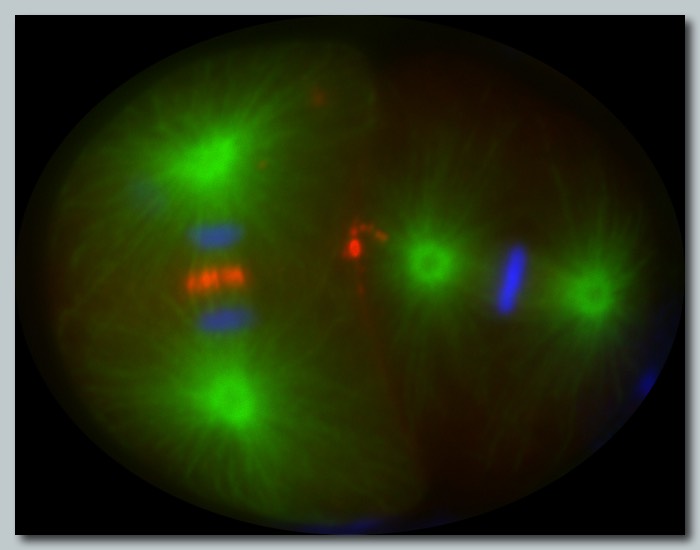News
Applications are invited for Postdoctoral Fellows interested in cytokinesis and cell polarization
Kristen Witte published her thesis work on cell polarization in budding yeast.
We published a collaborative study on the mechanical properties of stress fibers as asseess by optogenetic perturbations.
Elizabeth Wagner published her thesis work on optogenetic analysis of cytokinesis. Please also check out the videos.
The Glotzer lab focuses on questions related to cell organization. How do cells coordinate the position of the contractile ring with the position of the spindle? By what mechanisms are cortical domains that mediate cell polarization assembled and maintained? How do cells regulate cortical contractility during developmental morphogenesis?
To answer these questions, we use the nematode C. elegans, cultured human cells, budding yeast, and Drosophila as model systems and we combine forward and reverse genetics, biochemistry, and live cell imaging. Through these approaches we have discovered and extensively characterized the centralspindlin complex, a multifunctional protein complex that regulates essentially every step of cytokinesis.
We have pioneered the use of optogenetics to dissect spatiotemporally regulated processes. Using these approaches, we have demonstrated that RhoA activation is sufficient to induce cleavage furrows irrespective of the position of the spindle or the stage of the cell cycle. Likewise, we developed direct evidence that positive feedback is active during yeast cell polarization and found that the properties of this positive feedback is regulated by Cdk1 activation.
By combining optogenetics with "conventional" genetics and live cell imaging we can directly test models for how cells endow well defined cortical regions with distinct properties that are required for complex cellular events, like cell division, cell polarization, and cell migration.

Cytokinesis is mediated by an actin-based contractile ring that is attached to the overlying cell membrane. The contractile ring assembles in the cell cortex after anaphase onset at a site midway between the two poles of the mitotic spindle to ensure that the two sets of chromosomes (blue in figure) are equally partitioned into the two daughter cells. Cleavage furrow positioning is achieved through the combined action of astral microtubules (green) and the central spindle (red).